Vitamin A
Filter
-
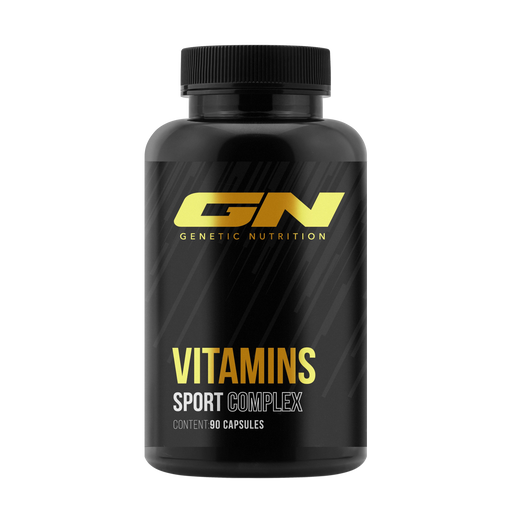 Jetzt 17% sparen
Jetzt % sparen
Original-Preis €34,90Original-Preis €34,90 - Original-Preis €34,90Original-Preis €34,90Aktueller Preis €28,90€28,90 - €28,90Aktueller Preis €28,90|/
Jetzt 17% sparen
Jetzt % sparen
Original-Preis €34,90Original-Preis €34,90 - Original-Preis €34,90Original-Preis €34,90Aktueller Preis €28,90€28,90 - €28,90Aktueller Preis €28,90|/Vitamins Sport Complex · 90 Kapseln
GN Laboratories73 reviewsDie „Versicherungspolice“ für jeden Sportler und Nichtsportler, die sicherstellt, dass kein Mangel an irgendeinem essentiellen Vitamin oder Mineral...
Vollständige Details anzeigenOriginal-Preis €34,90Original-Preis €34,90 - Original-Preis €34,90Original-Preis €34,90Aktueller Preis €28,90€28,90 - €28,90Aktueller Preis €28,90|/Jetzt 17% sparen Jetzt % sparen -
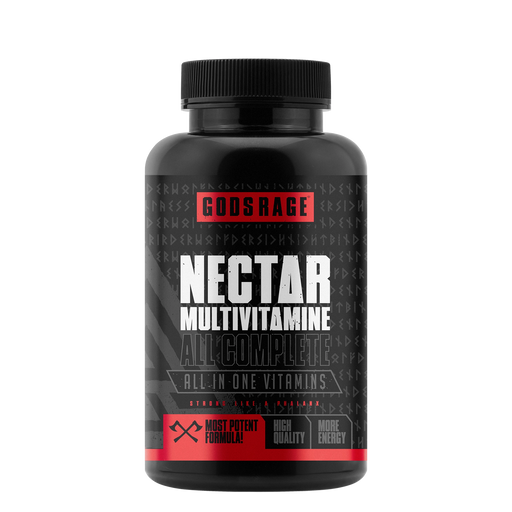 Ausverkauft
Original-Preis €34,90 - Original-Preis €34,90Original-Preis €34,90€34,90€34,90 - €34,90Aktueller Preis €34,90|/
Ausverkauft
Original-Preis €34,90 - Original-Preis €34,90Original-Preis €34,90€34,90€34,90 - €34,90Aktueller Preis €34,90|/Nectar Multivitamin · 90 Kapseln
Gods Rage35 reviewsNutze den Nektar der griechischen Götter, um zum stärksten, unbesiegbarsten und gesündesten Krieger zu werden, der Du sein kannst Hohe Dosen essen...
Vollständige Details anzeigenOriginal-Preis €34,90 - Original-Preis €34,90Original-Preis €34,90€34,90€34,90 - €34,90Aktueller Preis €34,90|/Ausverkauft -
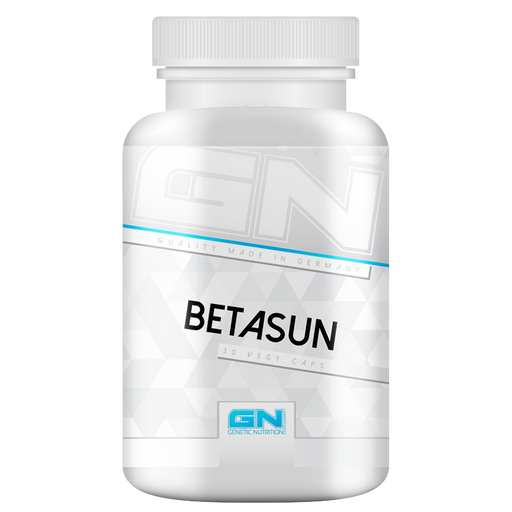 Jetzt 0% sparen
Jetzt % sparen
Original-Preis €14,90 - Original-Preis €14,90Original-Preis €14,90€14,90€14,90 - €14,90Aktueller Preis €14,90|/
Jetzt 0% sparen
Jetzt % sparen
Original-Preis €14,90 - Original-Preis €14,90Original-Preis €14,90€14,90€14,90 - €14,90Aktueller Preis €14,90|/BetaSUN · 30 Kapseln
GN Laboratories8 reviewsBetaSUN - GN Laboratories Beschleunigung des Bräunungsprozesses der Haut! Beschleunigung des Bräunungsprozesses der Haut Bessere Aufrechterhaltung...
Vollständige Details anzeigenOriginal-Preis €14,90 - Original-Preis €14,90Original-Preis €14,90€14,90€14,90 - €14,90Aktueller Preis €14,90|/Jetzt 0% sparen Jetzt % sparen -
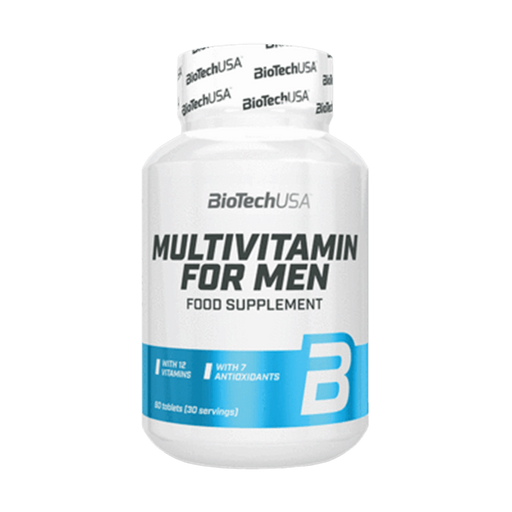 Jetzt 0% sparen
Jetzt % sparen
Original-Preis €15,90 - Original-Preis €15,90Original-Preis €15,90€15,90€15,90 - €15,90Aktueller Preis €15,90|/
Jetzt 0% sparen
Jetzt % sparen
Original-Preis €15,90 - Original-Preis €15,90Original-Preis €15,90€15,90€15,90 - €15,90Aktueller Preis €15,90|/Multivitamin For Men · 60 Tabletten
Biotech USA1 reviewMultivitaminpräparat speziell für Männer entwickelt Enthält abgestimmte Mischung aus Vitaminen, Mineralien und anderen Nährstoffen Unterstützt Mus...
Vollständige Details anzeigenOriginal-Preis €15,90 - Original-Preis €15,90Original-Preis €15,90€15,90€15,90 - €15,90Aktueller Preis €15,90|/Jetzt 0% sparen Jetzt % sparen -
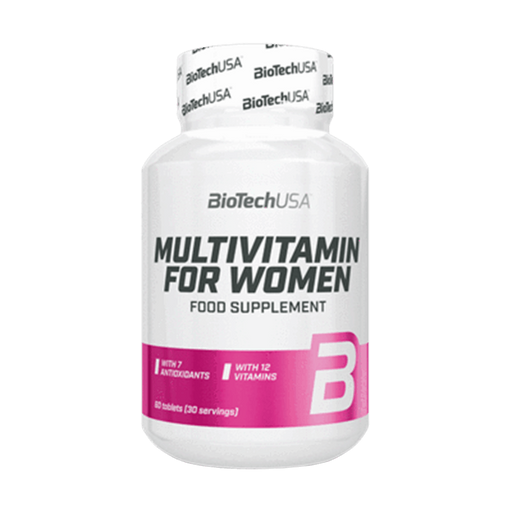 Jetzt 0% sparen
Jetzt % sparen
Original-Preis €15,90 - Original-Preis €15,90Original-Preis €15,90€15,90€15,90 - €15,90Aktueller Preis €15,90|/
Jetzt 0% sparen
Jetzt % sparen
Original-Preis €15,90 - Original-Preis €15,90Original-Preis €15,90€15,90€15,90 - €15,90Aktueller Preis €15,90|/Multivitamin For Women · 60 Tabletten
Biotech USANo reviewsMultivitamin For Women von Biotech USA ist ein Nahrungsergänzungsmittel für Frauen. Enthält komplexe Mischung von Vitaminen und Mineralstoffen. Ho...
Vollständige Details anzeigenOriginal-Preis €15,90 - Original-Preis €15,90Original-Preis €15,90€15,90€15,90 - €15,90Aktueller Preis €15,90|/Jetzt 0% sparen Jetzt % sparen -
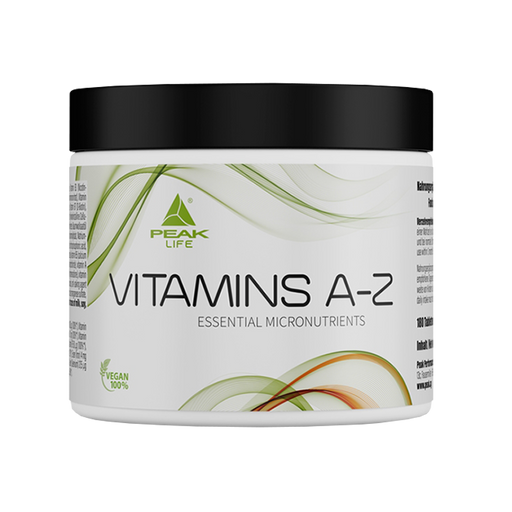 Jetzt 0% sparen
Jetzt % sparen
Original-Preis €9,90 - Original-Preis €9,90Original-Preis €9,90€9,90€9,90 - €9,90Aktueller Preis €9,90|/
Jetzt 0% sparen
Jetzt % sparen
Original-Preis €9,90 - Original-Preis €9,90Original-Preis €9,90€9,90€9,90 - €9,90Aktueller Preis €9,90|/Vitamins A-Z · 180 Tabletten
PEAK2 reviewsOptimierte Formel mit 23 Vitaminen, Mineralien und Spurenelementen Vitamin-Komplex mit 13 Vitaminen Tabletten mit Depotwirkung Ideal zur Grundvers...
Vollständige Details anzeigenOriginal-Preis €9,90 - Original-Preis €9,90Original-Preis €9,90€9,90€9,90 - €9,90Aktueller Preis €9,90|/Jetzt 0% sparen Jetzt % sparen -
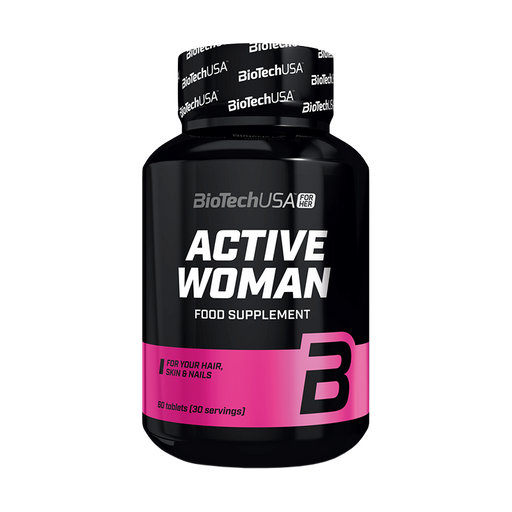 Jetzt 0% sparen
Jetzt % sparen
Original-Preis €14,90 - Original-Preis €14,90Original-Preis €14,90€14,90€14,90 - €14,90Aktueller Preis €14,90|/
Jetzt 0% sparen
Jetzt % sparen
Original-Preis €14,90 - Original-Preis €14,90Original-Preis €14,90€14,90€14,90 - €14,90Aktueller Preis €14,90|/Active Woman · 60 Tabletten
Biotech USANo reviews13 Vitamine und 12 Mineralien enthalten 15 antioxidative Wirkstoffe enthalten Mit natürlichen Pflanzenextrakten Enthält Vitamin C, Q10, Calcium un...
Vollständige Details anzeigenOriginal-Preis €14,90 - Original-Preis €14,90Original-Preis €14,90€14,90€14,90 - €14,90Aktueller Preis €14,90|/Jetzt 0% sparen Jetzt % sparen
Vitamin A ist ein fettlösliches Vitamin, das im Körper eine lebenswichtige Rolle spielt. Es kommt natürlich in der Nahrung vor und kann auch in Form von Supplements eingenommen werden. Auch wenn Vitamin A häufig als einzelner Nährstoff angesehen wird, steht der Name in Wirklichkeit für eine Gruppe fettlöslicher Verbindungen, zu denen Retinol, Retinal und Retinylester gehören. In der Nahrung finden sich zwei Formen von Vitamin A wieder. „Fertiges“ Vitamin A – Retinol und Retinylester – kommen exklusiv in tierischen Produkten wie Milchprodukten, Leber und Fisch vor, während sich Provitamin A Katotenoide in pflanzlichen Nahrungsmitteln wie Obst, Gemüse und Ölen wiederfinden (1). In Pflanzen finden sich nur unterschiedliche Carotinoide. Sie besitzen einen Provitamincharakter und können teilweise vom Menschen zu Vitamin A umgewandelt werden. Wie gut die Carotinoide in Vitamin A umgewandelt werden können, hängt von ihrer Struktur (dem Aufbau) ab. Die günstigste Struktur weist Beta-Carotin auf. Es kann unter bestimmten Bedingungen in zwei Vitamin A Moleküle umgewandelt werden.
Um diese Formen von Vitamin A nutzen zu können, muss der Körper diese erst in Retinal und Retinsäure – die aktiven Formen des Vitamins – umwandeln. Da es sich bei Vitamin A um ein fettlösliches Vitamin handelt, kann es für eine spätere Verwendung im Körpergewebe gespeichert werden. Das meiste Vitamin A wird hierbei in Form von Retinylestern in der Leber gespeichert (2). Diese Ester werden in Trans-Retinol aufgebrochen, welches an das Retinol bindende Protein (RBP) anbindet. In dieser gebundenen Form gelangt Vitamin A anschließend in den Blutkreislauf, so dass der Körper es verwenden kann (3). Die strukturelle Beschaffenheit von Vitamin A und Carotinoiden lässt diese Stoffe sehr empfindlich gegenüber Licht, Sauerstoff und Säuren reagieren. Wodurch sie ihre biologische Wirksamkeit verlieren. Bei falscher Lebensmittellagerung und -zubereitung kann das bis zur Halbierung der Bioverfügbarkeit von Vitamin A und Carotinoiden führen. Lange Kochzeiten und ungekühlte, helle Lagerung sollten möglichst vermieden werden.
Am Beispiel von Karotten lässt sich zeigen, dass man die Bioverfügbarkeit dieser Stoffe mit einfachen küchentechnischen Verfahren durchaus verbessern kann. Bei einem frischen Karottensaft sind die sonst nur schwer zu verdauenden Zellwände der Wurzel (in denen Carotin enthalten ist) aufgespalten. So liegen die Carotinoide "frei" und stehen so vermehrt dem Verdauungssystem zur Verfügung. Rohe, unzerkleinerte Zellen werden zum größten Teil wieder ausgeschieden und mit ihnen die Carotine und andere Biostoffe der Zelle. Das gleiche gilt auch beim Blanchieren. Die Zellwände werden durch die kurze Hitzezufuhr leichter verdaulich gemacht und somit die Bioverfügbarkeit erhöht. Tipp: Mit dem Verzehr aufgenommenes Fett steigert die Aufnahmefähigkeit der Carotinoide nochmals. Das verdanken sie ihrer fettlöslichen Eigenschaft.
Stoffwechsel
Carotinoide und Vitamin A sind in der Nahrung hauptsächlich in einer bestimmten Form von Fetten (Estern) vorhanden. Dadurch ist ihre Resorption eng mit dem Fettstoffwechsel verbunden. Sie werden durch Gallensäure und Enzyme (Esterasen) aufgespalten. So "zerkleinert" können sie von den Epithelzellen (Hautzellen) des Dünndarms aufgenommen werden. In den Hautzellen werden sie zu Retinol umgewandelt und von dort aus zur Leber transportiert. Die Leber dient als Speicherorgan für Vitamin A. Bei Bedarf gibt die Leber Retinol an das Blut ab und "schickt" es zu den Zielzellen.
Der Transport von Retinol ist allerdings nur möglich, wenn es an ein bestimmtes, in der Leber synthetisiertes (gebildetes) Protein gebunden ist. Das Protein heißt RBP (Retinol Bildendes Protein). Die Bindung an RBP ist aus zwei Gründen für die Retinolaufnahme in der Zellen notwendig. Zum einen erkennen die Zellen den Vitamin-RBP-Komplex. Dieses "Erkennen" ermöglicht die Aufnahme von Retinol in die Zellen. Zum anderen verhindert dieser Komplex eine unkontrollierte Aufnahme des Vitamins und somit giftige oder unerwünschte Wirkungen in den Zellen. Die Ausscheidung von Retinol erfolgt über den Urin, die Galle und den Darm.
Funktionen von Vitamin A
Vitamin A ist für die Gesundheit, eine Unterstützung des Zellwachstums, die Immunfunktion, die Entwicklung des Fötus und die Sehkraft essentiell. Die vielleicht am besten bekannten Funktionen von Vitamin A umfassen dessen Rolle bei der Sehkraft und der Gesundheit der Augen. Retinal, die aktive Form von Vitamin A, verbindet sich mit dem Protein Opsin, um Rhodopsin zu bilden – ein Molekül, dass für das Farbsehen und das Sehen bei wenig Licht notwendig ist (13). Es hilft außerdem dabei, die Hornhaut des Auges – die äußerste Schicht des Auges – und die Bindehaut – die dünne Membran, die die Oberfläche des Auges und die Innenseite der Augenlieder bedeckt – aufrecht zu erhalten (14). Zusätzlich hierzu hilft Vitamin A dabei, Oberflächengewebe wie Haut, Darmschleimhaut, Lungen, Blase und Innenohr aufrecht zu erhalten. Es unterstützt darüber hinaus die Immunfunktion, indem es Wachstum und Verteilung von T-Zellen – ein Typ von weißen Blutkörperchen, der den Körper vor Infektionen schützt – unterstützt (15). Des Weiteren unterstützt Vitamin A gesunde Hautzellen, das männliche und weibliche reproduktive System und die Entwicklung des Fötus (16).
Es ist bisher noch nicht vollständig geklärt, für welche Aufgaben Retinol im Einzelnen verantwortlich ist. Neben den bereits erwähnten Funktionen ist es auch an folgenden Prozessen beteiligt:
- Wachstum und Ausbildung von Hautzellen
- Spermatabildung
- Plazentaentwicklung
- Testosteronproduktion
- Fördert das Wachstum von Knochen und Zähnen
- gesunder Haut und Haaren
Potentielle Gesundheitsvorzüge von Vitamin A
Vitamin A ist für die Gesundheit der Augen und eine gute Sehkraft wichtig
Vitamin A schützt die Augen vor Nachtblindheit und einer alterbedingten Abnahme der Sehkraft Vitamin A ist für die Aufrechterhaltung der Sehkraft essentiell. Dieses Vitamin wird benötigt, um Licht, das ins Auge fällt, in elektrische Signale umzuwandeln, die ans Gehirn gesandt werden können. In der Tat kann eine so genannte Nachtblindheit eines der ersten Symptome eines Vitamin A Mangels sein (18). Eine Nachtblindheit tritt bei Menschen mit einem Vitamin A Mangel auf, da dieses Vitamin eine primäre Komponente des Pigments Rhodopsin ist. Rhodopsin findet sich in der Retina des Auges wieder und ist extrem lichtempfindlich. Menschen, die unter Nachtblindheit leiden, können während des Tages weiterhin normal sehen, weisen in der Dunkelheit eine reduzierte Sehkraft auf, da die Augen damit zu kämpfen haben Licht bei geringer Helligkeit wahrzunehmen. Zusätzlich dazu, dass es Nachtblindheit verhindert, kann Beta-Karotin, wenn es in ausreichenden Mengen verzehrt wird, dabei helfen die Abnahme der Sehkraft zu reduzieren, die bei einigen Menschen mit zunehmendem Alter zustande kommt (18).
Eine altersbedingte Makulardegeneration ist in der westlichen Welt die führende Ursache für eine Erblindung. Auch wenn die exakte Ursache unbekannt ist, glaubt man, dass diese Erkrankung das Resultat zellularer Schäden im Bereich der Retina ist, die auf oxidativen Stress zurückgeführt werden können (19). Eine Studie, die sich mit altersbedingten Erkrankungen der Augen beschäftigt hat, fand heraus, dass ein antioxidatives Supplement (inklusive Beta-Karotin) bei Menschen über 50 mit Degeneration der Sehkraft dabei helfen kann, das Risiko der Entwicklung einer fortgeschrittenen Makulardegeneration um 25% zu reduzieren (20). Ein aktuelles Studienreview kam jedoch zu dem Ergebnis, dass Beta-Karotin Supplements für sich alleine eine durch eine alterbedingte Makulardegeneration hervorgerufene Abnahme der Sehkraft weder verhindern noch verlangsamen können (21).
Zusammenfassung: Der Verzehr adäquater Mengen an Vitamin A kann die Entwicklung von Nachtblindheit verhindern und dabei helfen, eine alterbedingte Abnahme der Sehkraft zu verlangsamen.
Vitamin A ist ein wirkungsvolles Antioxidans
Provitamin A Karotenoide wie Beta-Karotin, Alpha-Karotin und Beta-Cryptoxanthin sind Vorläuferstoffe von Vitamin A und besitzen antioxidative Eigenschaften. Karotenoide bekämpfen freie Radikale – hochreaktive Moleküle, die den Körper dadurch schädigen können, dass sie oxidativen Stress generieren (22). Oxidativer Stress wird mit zahlreichen chronischen Erkrankungen wie Diabetes, Krebs, Herzkrankheiten und kognitivem Verfall in Verbindung gebracht (23). Eine Ernährung, die reich an Karotenoiden ist, wird mit einem reduzierten Risiko für viele dieser Krankheiten inklusive Herzkrankheiten, Lungenkrebs und Diabetes in Verbindung gebracht (24, 25, 26).
Zusammenfassung: Karotenoide können den Körper vor oxidativem Stress und der Entwicklung chronischer Krankheiten schützen.
Vitamin A unterstützt ein gesundes Immunsystem
Vitamin A spielt bei der Aufrechterhaltung der natürlichen Abwehr des Körpers eine entscheidende Rolle. Dies umfasst die Schleimhautbarrieren von Augen, Lunge, Verdauungstrakt und Genitalien, welche dabei helfen, Bakterien und andere infektiöse Elemente fern zu halten. Es ist außerdem an der Produktion und Funktion weißer Blutkörperchen beteiligt, welche dabei helfen Bakterien und andere Krankheitserreger aus dem Blutkreislauf zu entfernen. Dies bedeutet im Umkehrschluss, dass ein Vitamin A Mangel die Anfälligkeit für Infektionen erhöhen und im Krankheitsfall darüber hinaus den Heilungsprozess verlangsamen kann (27, 28). In der Tat konnte gezeigt werden dass eine Korrektur eines Vitamin A Mangels bei Kindern in Ländern, in denen Infektionskrankheiten wie Masern und Malaria weit verbreitet sind, das Risiko senken kann, an diesen Krankheiten zu sterben (29).
Zusammenfassung: Eine adäquate Vitamin A Zufuhr über die Nahrung hilft dabei, das Immunsystem gesund und voll funktionsfähig zu halten.
Vitamin A kann das Risiko für Akne reduzieren
Akne ist eine chronische, entzündliche Hautkrankheit. Menschen, die unter Akne leiden, entwickeln schmerzhafte Pickel im Bereich von Gesicht, Rücken und Brust. Diese Pickel entstehen, wenn die Talgdrüsen der Haut mit toten Hautpartikeln und Öl verstopfen. Die Talgdrüsen befinden sich in den Haarfollikeln der Haut und produzieren Talg – eine ölige, wachsartige Substanz, welche die Haut feucht und wasserdicht hält. Auch wenn diese Pickel harmlos sind, kann Akne ernsthafte Auswirkungen auf die mentale Gesundheit besitzen und zu verminderter Selbstsicherheit, Angst und Depressionen führen (30). Die exakte Rolle, die Vitamin A bei der Behandlung von Akne spielt ist weiterhin unklar (31).
Man vermutet jedoch, dass ein Vitamin A Mangel das Risiko für eine Entwicklung von Akne erhöht, da er eine Überproduktion des Proteins Keratin in den Haarfollikeln verursacht (32, 33). Dies würde das Risiko für Akne dadurch erhöhen, dass es schwerer wird, tote Hautzellen von den Haarfollikeln zu entfernen, was zu einer Blockade der Talgdrüsen führen kann. Einige Vitamin A basierte Medikamente sind auf Rezept erhältlich. Isotretinoin ist ein Beispiel für ein orales Retinoid, das sich bei der Behandlung von schwerer Akne als effektiv erwiesen hat. Dieses Medikament kann jedoch ernsthafte Nebenwirkungen besitzen und darf deshalb nur unter ärztlicher Kontrolle verwendet werden (34, 35)
Zusammenfassung: Die exakte Rolle, die Vitamin A bei Verhinderung und Behandlung von Akne spielt, ist unklar. Trotzdem werden Vitamin A basierte Produkte häufig zur Behandlung von Akne eingesetzt.
Vitamin A unterstützt die Knochengesundheit
Die Schlüsselnährstoffe für die Aufrechterhaltung gesunder Knochen mit zunehmendem Alter sind Protein, Kalzium und Vitamin D. Doch auch der Verzehr von ausreichend Vitamin A ist für Wachstum und Entwicklung der Knochen notwendig und ein Mangel an diesem Vitamin wird mit einer schlechten Knochengesundheit in Verbindung gebracht (36). In der Tat weisen Menschen mit niedrigen Vitamin A Blutspiegeln ein höheres Risiko für Knochenbrüche auf, als diese bei Menschen mit gesunden Vitamin A Spiegeln der Fall ist (36). Zusätzlich hat eine aktuelle Metaanalyse von Observationsstudien herausgefunden, dass Menschen mit den höchsten Mengen an Vitamin A in ihrer Nahrung ein um 6% niedrigeres Risiko für Frakturen aufweisen (36). Doch niedrige Vitamin A Spiegel könnten nicht das einzige Problem sein, wenn es um die Knochengesundheit geht.
Einige Studien haben herausgefunden, dass auch Menschen mit hoher Vitamin A Zufuhr ein höheres Risiko für Knochenbrüche aufweisen (37). Diese Resultate basieren jedoch auf Observationsstudien, welche Ursache und Wirkung nicht bestimmen können. Dies bedeutet, dass die Verbindung zwischen Vitamin A und Knochengesundheit zurzeit noch nicht völlig verstanden wird und dass weitere kontrollierte Untersuchungen benötigt werden, um zu bestätigen, was bei Observationsstudien beobachtet wurde. Man sollte im Hinterkopf behalten, dass der Vitamin A Status nicht für sich alleine das Risiko für Frakturen bestimmt und dass auch die Verfügbarkeit anderer Schlüsselnährstoffe wie Vitamin D eine Rolle spielt (38).
Zusammenfassung: Der Verzehr ausreichender Mengen an Vitamin A könnte dabei helfen, die Knochen zu schützen und das Risiko für Frakturen zu reduzieren, wobei die Verbindung zwischen Vitamin A und der Knochengesundheit noch nicht völlig verstanden wird.
Vitamin A fördert ein gesundes Wachstum und ein gesundes reproduktives System
Vitamin A ist für die Aufrechterhaltung eines gesunden reproduktiven Systems bei Männern und Frauen, sowie zur Sicherstellung eines normalen Wachstums und einer normalen Entwicklung des Embryos während der Schwangerschaft wichtig. Rattenstudien, die die Bedeutung von Vitamin A bei der männlichen Reproduktion untersucht haben, haben gezeigt, dass ein Vitamin A Mangel die Entwicklungen der Spermazellen blockiert und zu Unfruchtbarkeit führt (39, 40). Andere mit Tieren durchgeführte Untersuchungen legen nahe, dass ein Vitamin A Mangel bei weiblichen Tieren die Reproduktion durch eine Reduzierung der Qualität der Eizellen und eine Beeinträchtigung des Einnistens der Eizelle in der Gebärmutter negativ beeinflussen kann (39).
Bei schwangeren Frauen ist Vitamin A auch an Wachstum und Entwicklung der wichtigsten Organe und der Strukturen des ungeborenen Kindes inklusive Skelett, Nervensystem, Herz, Nieren, Augen, Lunge und Bauchspeicheldrüse beteiligt. Doch auch zu viel Vitamin A während der Schwangerschaft kann für das heranwachsende Baby schädlich sein und zu Geburtsdefekten führen (41, 42). Aus diesem Grund empfehlen viele Gesundheitsexperten, dass Frauen Nahrungsmittel wie Leber, die konzentrierte Mengen an Vitamin A enthalten, sowie Supplements, die Vitamin A enthalten, während der Schwangerschaft meiden sollten.
Zusammenfassung: Adäquate Mengen an Vitamin A sind für die reproduktive Gesundheit und die Gesundheit des ungeborenen Babys während der Schwangerschaft essentiell.
Vitamin A könnte das Risiko für bestimmte Arten von Krebs reduzieren
Krebs entsteht, wenn abnormale Zellen damit beginnen zu wachsen und sich auf unkontrollierte Art und Weise zu teilen. Da Vitamin A bei Wachstum und Entwicklung der Zellen eine wichtige Rolle spielt, ist sein Einfluss auf das Krebsrisiko und seine Rolle bei der Verhinderung von Krebs für Wissenschaftler von Interesse (43, 44). Im Rahmen von Observationsstudien wurde der Verzehr höherer Mengen an Vitamin A in Form von Beta-Karotin mit einem reduzierten Risiko für bestimmte Arten von Krebs inklusive Morbus Hodgkin, Gebärmutterhalskrebs, Lungenkrebs und Blasenkrebs in Verbindung gebracht (45, 46, 47, 48). Doch auch wenn hohe Zufuhr von Vitamin A in Form von pflanzlichen Nahrungsmitteln mit einem reduzierten Krebsrisiko in Verbindung gebracht wird, konnte eine ähnliche Verbindung mit tierischen Nahrungsmitteln, die aktive Formen von Vitamin A enthalten, nicht hergestellt werden (49, 50).
Auch bei Vitamin A Supplements konnte eine solche Verbindung noch nicht gezeigt werden (51). Im Rahmen einiger Studien konnte bei Rauchern, die Beta-Karotin Supplements einnahmen, sogar ein erhöhtes Lungenkrebsrisiko beobachtet werden (52, 53, 54). Zum augenblicklichen Zeitpunkt wird die Verbindung zwischen den Vitamin A Spiegeln im Körper und dem Krebsrisiko noch nicht vollständig verstanden. Die verfügbaren Daten legen jedoch nahe, dass eine adäquate Vitamin A Zufuhr – insbesondere in Form von pflanzlichen Quellen – wichtig für eine gesunde Zellteilung ist und das Risiko für bestimmte Krebsarten senken könnte (55).
Zusammenfassung: Eine adäquate Zufuhr von Vitamin A aus pflanzlichen Quellen könnte das Risiko für bestimmte Krebsarten inklusive Morbus Hodgkin, Gebärmutterhalskrebs, Lungenkrebs und Blasenkrebs senken, wobei die genaue Beziehung zwischen Vitamin A und Krebs noch nicht bekannt ist.
Mangelerscheinungen
Auch wenn ein Vitamin A Mangel in der westlichen Welt eher selten vorkommt, ist ein solcher Mangel in Entwicklungsländern weit verbreitet, da die Menschen in diesen Ländern nur begrenzten Zugang zu Nahrungsmitteln haben, die Vitamin A oder Provitamin A Karotenoide enthalten. Ein Vitamin A Mangel kann zu einer Reihe von Gesundheitsproblemen führen. So ist laut WHO ein Vitamin A Mangel weltweit die führende Ursache für eine vermeidbare Erblindung von Kindern. Ein Vitamin A Mangel erhöht außerdem den Schweregrad von Infektionen und das Risiko, an Infektionen wie Masern oder Durchfall zu sterben (8, 9). Zusätzlich hierzu erhöht ein Vitamin A Mangel bei schwangeren Frauen das Risiko für Anämien und Tod und beeinträchtigt die Entwicklung des Fötus durch eine Verlangsamung von Wachstum und Entwicklung (10). Weniger ernsthafte Symptome eines Vitamin A Mangels umfassen Probleme wie Hyperkeratose und Akne (11, 12).
Als frühes Stadium bei Retinol-Mangel treten Veränderungen des Sehens auf. Dazu gehört z.B. Nachtblindheit und Lichtempfindlichkeit. Weitere Symptome sind Störungen des Stoffwechsels von Haut und Schleimhäuten. Im Auge führt dies anfangs zum Austrocknen der Bindehaut und kann später bis zur Verhornung der Hornhautzellen und letztendlich zur Erblindung führen. Bei Kindern und Jugendlichen verursacht Retinolmangel eine Störung des Wachstums und der Knochenbildung. Vitamin-A-Mangel kann trotz ausreichender Versorgung mit Retinol auftreten, wenn dem Organismus nicht ausreichend RBP zur Verfügung stehen, die das Vitamin an sich binden und zu den Zellen transportieren. Dies ist allerdings nur bei Veganer zu befürchten, die nicht genügend Proteine zu sich nehmen. Bestimmte Personengruppen wie Frühgeburten, Menschen, die unter einer zystischen Fibrose leiden, schwangere oder stillende Frauen und Menschen in Entwicklungsländern weisen ein erhöhtes Risiko für einen Vitamin A Mangel auf (7).
Hypervitaminose
Eine Vergiftung (Hypervitaminose) kann durch eine zu hohe Vitamin-A-Zufuhr verursacht werden. Grund dafür ist die hohe Speicherkapazität des Vitamins. Dies kann aber nur in Einzelfällen bei übermäßigem Verzehr von tierischen Produkten (Leber) auftreten. Eine Retinol-Vergiftung ist bei einer ausgewogenen Ernährungsweise nicht zu erwaten.
Bei einer kurzzeitigen und hohen Überdosierung (das Hundertfache des Tagesbedarfs und mehr) während einer Retinol-Mangel-Behandlung können folgende Symptome auftreten:
- Übelkeit
- Erbrechen
- Appetitlosigkeit
- Muskelkoordinationsstörungen
- Hautschäden
- Schläfrigkeit
Symptome einer chronischen Hypervitaminose A erscheinen nach einer über Monate und Jahre hinweg überhöhten Retinolaufnahme, die das Zehnfache des Tagesbedarfs überschritten hat. Vergiftungserscheinungen können zusätzlich folgende Symptome umfassen:
- Sehstörungen
- Schmerzen in Knochen und Gelenken
- Haarausfall
- Lichtempfindlichkeit
- Kopfschmerzen
- Trockene oder juckende Haut
- Leberschäden und Gelbsucht
- Verzögertes Wachstum
- Verwirrung
Die Beschwerden können nach dem Absetzen des Vitamins wieder verschwinden. Hypervitaminose A kann nur bei der Zufuhr von vorgefertigtem Vitamin A auftreten. Carotinoide werden bei ihrer Umwandlung zu Retinol reguliert und dem Bedarf des Körpers angepasst. Längeres Kochen, Sauerstoff und Licht schadet Vitamin A. Deshalb sollte man Lebensmittel, die Vitamin A enthalten, immer ungeschält oder verpackt und dunkel – am besten im Kühlschrank – lagern. Die Kochverluste liegen zwischen 10 und 30 Prozent. Von dem Verzehr von Leber in der Schwangerschaft wird abgeraten. (Wahrscheinlich ist Retinol teratogen, das heißt fruchtwasserschädigend) Folge: Fehlgeburten, Missbildungen. Eine Hypervitaminose tritt bei Aufnahme von über 200 Milligramm pro Tag ein.
Nahrungsmittelquellen
Es gibt eine Vielzahl an Nahrungsmittelquellen für Vitamin A und Provitamin A Karotenoide. In Pflanzen ist es als Vorstufe Beta-Carotin enthalten, das dann im Organismus zu Vitamin A weiterverarbeitet wird. Beta-Carotin wird deshalb auch als Provitamin A bezeichnet. Da Beta-Carotin nur bei Bedarf in Retinol umgewandelt wird, und im Gegensatz zu diesem auch in größeren Mengen nicht toxisch wirkt, sollte es in Nahrungsergänzungmitteln gegenüber dem Retinol selbst bevorzugt werden. Retinol findet sich in Milchprodukten, Eigelb und Lebertran.Vitamin A ist wichtig für das Wachstum, Funktion und Aufbau von Haut und Schleimhäuten sowie für den Sehvorgang, da es Baustein des Sehfarbstoffes ist. Die Verwertung dieses Vitamins im Körper kann durch fettarme Kost, Leberschäden und die Einnahme von Östrogenpräparaten gestört werden. Als gute Quellen für Vitamin A erweisen sich Fisch, Fischleberöle (Lebertran), Leber, Butter, Eigelb, Milch und Milchprodukte. In Gemüse, zum Beispiel Karotten, Spinat, Broccoli und Grünkohl ist das Beta-Carotin enthalten, ebenso in einigen orangen bis roten Früchten wie Orangen.
Das Aldehyd des Vitamins A ist Retinal, welches zusammen mit Opsin den Sehfarbstoff Rhodopsin bildet. Mangel an Vitamin A führt zu Nachtblindheit und Verhornung der Sehzellen des Auges. Die Fähigkeit des Körpers Karotenoide wie Beta-Karotin in fertiges Vitamin A umzuwandeln hängt von vielen Faktoren ab, zu denen die genetische Veranlagung, die Ernährung, die allgemeine Gesundheit und eine etwaige Medikation gehören (4). Aus diesem Grund sollten Menschen, die eine pflanzenbasierte Ernährung befolgen – und insbesondere Veganer – sorgfältig darauf achten, ausreichend karotinreiche Nahrungsmittel zu sich zu nehmen.
Die Nahrungsmittel mit dem höchsten Gehalt an fertigem Vitamin A umfassen:
- Eigelb
- Rinderleber
- Leberwurst
- Butter
- Fischöl
- Hühnerleber
- Lachs
- Cheddar
- Makrelen
- Forelle
Nahrungsmittel, die reich an Provitamin A Karotenoiden wie Beta-Karotin sind umfassen (5, 6):
- Süßkartoffeln
- Speisekürbis
- Karotten
- Kohl
- Spinat
- Löwenzahnblätter
- Mangold
- Rote Paprika
- Petersilie
Bedarf
Bei vorgefertigtem Retinol benötigen erwachsene Frauen 0,8 und Männer 1 mg Retinol. Das, mit der aus tierischer Nahrung, aufgenommene Vitamin A kann der Organismus direkt in den Stoffwechsel mit einbeziehen. Die strukturelle Beschaffenheit der Carotinoide lässt erwarten, dass aus ß-Carotin zwei und aus allen anderen Carotinoiden ein Vitamin A entsteht. Die Umwandlungsrate verhält sich in der Praxis nicht so optimal. Um etwa den Bedarf des Körpers von 1 mg Vitamin A zu decken, benötigt man 6 mg ß-Carotin bzw. 12 mg andere Carotinoide.
Bedarf im Sport
Als Retinol sollte man 5.000-10.000I.E. pro Tag mit einer Mahlzeit zu sich nehmen. Als Beta-Carotin: 15-60mg pro Tag.
Fazit
Vitamin A ist ein fettlöslicher Nährstoff, der für die Funktion des Immunsystems, die Gesundheit der Augen, das reproduktive System und die Entwicklung des Fötus von entscheidender Bedeutung ist. Sowohl ein Mangel, als auch eine zu hohe Zufuhr können ernsthafte Nebenwirkungen mit sich bringen, weshalb es wichtig ist, im empfohlenen Bereich von 700 bis 900 mcg zu bleiben und die tägliche Obergrenze von 3.000 mcg nicht zu überschreiten.
Referenzen
- https://www.ncbi.nlm.nih.gov/books/NBK222318/
- https://www.ncbi.nlm.nih.gov/pubmed/21067523
- https://www.ncbi.nlm.nih.gov/books/NBK6223/
- https://www.ncbi.nlm.nih.gov/pubmed/23053560
- http://nutritiondata.self.com/foods-000134000000000000000.html
- http://nutritiondata.self.com/foods-000135000000000000000-2.html?
- https://www.ncbi.nlm.nih.gov/pubmed/22895955
- https://www.ncbi.nlm.nih.gov/pmc/articles/PMC3437709/
- https://www.ncbi.nlm.nih.gov/pubmed/24500929
- https://www.ncbi.nlm.nih.gov/pmc/articles/PMC3843354/
- https://www.ncbi.nlm.nih.gov/pmc/articles/PMC2965901/
- https://www.ncbi.nlm.nih.gov/pubmed/23826827
- https://www.ncbi.nlm.nih.gov/pmc/articles/PMC3546623/
- https://www.ncbi.nlm.nih.gov/books/NBK431094/
- https://www.ncbi.nlm.nih.gov/pmc/articles/PMC3471201/
- https://www.ncbi.nlm.nih.gov/pmc/articles/PMC3257687/
- https://academic.oup.com/jn/article/138/10/1835/4669996
- https://www.ncbi.nlm.nih.gov/pubmed/26447482
- https://www.ncbi.nlm.nih.gov/pubmed/11033038/
- https://www.ncbi.nlm.nih.gov/pubmed/1159494
- https://www.ncbi.nlm.nih.gov/pubmed/28756617
- https://www.ncbi.nlm.nih.gov/pmc/articles/PMC3249911/
- https://www.ncbi.nlm.nih.gov/pmc/articles/PMC5551541/
- https://www.ncbi.nlm.nih.gov/pmc/articles/PMC4321000/
- https://www.ncbi.nlm.nih.gov/pmc/articles/PMC5328985/
- https://www.ncbi.nlm.nih.gov/pubmed/29110607
- https://www.ncbi.nlm.nih.gov/pubmed/6496388/
- https://www.ncbi.nlm.nih.gov/pubmed/11375434
- https://www.ncbi.nlm.nih.gov/pmc/articles/PMC4832596
- https://www.ncbi.nlm.nih.gov/pubmed/27799808
- https://www.ncbi.nlm.nih.gov/pubmed/27279815
- https://www.omicsonline.org/open-access/role-of-diet-in-dermatological-conditions-2155-9600-1000400.php?aid=60091
- https://www.ncbi.nlm.nih.gov/pubmed/15660900
- https://www.ncbi.nlm.nih.gov/pmc/articles/PMC4384860
- https://www.ncbi.nlm.nih.gov/pmc/articles/PMC5329102
- https://www.ncbi.nlm.nih.gov/pubmed/28891953
- https://www.ncbi.nlm.nih.gov/pubmed/24183637
- https://www.ncbi.nlm.nih.gov/pubmed/25763530
- https://www.ncbi.nlm.nih.gov/pmc/articles/PMC3257687/
- https://www.ncbi.nlm.nih.gov/pubmed/26559678
- https://www.ncbi.nlm.nih.gov/pubmed/9345570
- https://www.ncbi.nlm.nih.gov/pubmed/10799410
- https://www.ncbi.nlm.nih.gov/pubmed/8923019
- https://www.ncbi.nlm.nih.gov/pubmed/11796231
- https://www.ncbi.nlm.nih.gov/pubmed/28011986
- https://www.ncbi.nlm.nih.gov/pubmed/22005522
- https://www.ncbi.nlm.nih.gov/pubmed/26569298
- https://www.ncbi.nlm.nih.gov/pmc/articles/PMC4030017
- https://www.ncbi.nlm.nih.gov/pubmed/25711533
- https://www.ncbi.nlm.nih.gov/pubmed/1764569
- https://www.ncbi.nlm.nih.gov/pubmed/10601381
- https://www.ncbi.nlm.nih.gov/pubmed/20155614
- https://www.ncbi.nlm.nih.gov/pubmed/15572756
- https://www.ncbi.nlm.nih.gov/pubmed/8602180
- https://www.ncbi.nlm.nih.gov/pmc/articles/PMC4387950







